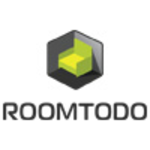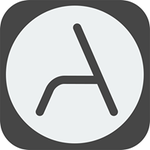What Is Floor Plan Software?
Floor plan software is an invaluable resource for those working in the real estate or interior design industries, as well as homeowners wishing to rebuild or redesign their living space. This software enables users to effortlessly construct digital floor plans and 3D models of rooms and structures, providing a greater grasp of layout and design options.
Floor plan software is essentially a kind of computer-aided design (CAD) software that specializes in designing floor plans and home layouts. These programs include a variety of tools and features to assist users in creating floor plans in an accurate and quick manner. This features drag-and-drop functionality for walls, doors, windows, and furniture, as well as the option to add measurements, labels, and annotations to the plan. In addition to designing 2D floor plans, many software solutions also allow users to build in 3D, providing a more realistic and immersive view of their environment.
This is very handy for interior designers and real estate experts who wish to present their concepts and vision to clients. One of the primary advantages of using floor plan software is the time and money it saves. Instead of manually measuring and drafting a floor plan, users may instantly build a digital version that is easily editable and adjustable.
This can save hours, if not days, of effort and allow users to concentrate on other elements of their projects. Floor plan software also allows for greater flexibility and customization than traditional pen-and-paper approaches. Users can quickly envision their options and make informed judgments before making any real-life modifications by experimenting with different layouts, furniture combinations, and color schemes.
Overall, floor plan software is an essential tool for anyone involved in building or redesigning a facility. It streamlines the design process by giving an easy and fast approach to build personalized floor plans, saving time and resources while allowing for greater creativity and precision.
What Are The Recent Trends In Floor Plan Software?
Floor plan software has been available for a long time, but recent technological improvements have resulted in some industry-revolutionizing trends. As a buyer, you must be aware of these trends in order to make an informed decision about purchasing floor plan software. In this buyer's guide, we'll go over the latest developments in floor plan software to bear in mind while making your purchase.
1. Cloud-Based Solutions: One of the most significant changes in floor plan software is the transition to cloud-based solutions. Traditional floor plan software required a single purchase and installation on a specific device. However, cloud-based solutions allow users to access software from any device with an internet connection, making it more handy and adaptable.
2. Virtual And Augmented Reality: Another growing trend in the floor plan software business is the incorporation of virtual and augmented reality. Users can have a more immersive experience when developing and viewing their floor designs with VR and AR technology. This tendency has streamlined the design process and enhanced communication between clients and designers.
3. Integration With Building Information Modeling (BIM): BIM is becoming an increasingly important technology in the building and architecture industries. It's no surprise that floor plan software has begun to interface with BIM. This enables a smoother and more accurate data transmission between the design and construction phases, resulting in increased productivity and cost savings.
4. Mobile Compatibility: As smartphones and tablets have grown in popularity, floor plan software must now be compatible with mobile devices. Many software providers now offer mobile applications that allow users to access and edit their floor plans while on the road. This tendency has improved the software's accessibility and usability.
5. Artificial Intelligence (AI) And Machine Learning: AI and machine learning are beginning to find their way into floor plan software, offering a new level of automation and efficiency. These technologies can automatically discover and correct problems in floor plans, make design recommendations, and even generate cost estimates. This tendency has dramatically increased the speed and precision of the design process.
Benefits Of Using Floor Plan Software
When constructing or renovating a facility, having a clear floor plan is essential. It aids in visualizing the layout, identifying potential issue areas, and ensuring that all required pieces fit together effortlessly. This is where floor planning software comes in. With technology improvements, generating and altering floor plans is now easier and more accessible than ever before.
we'll go over the advantages of using floor plan software and why it should be part of your design strategy.
1. User-Friendly Interface: One of the most significant advantages of floor plan software is its user-friendly interface. It is intended to be intuitive, making it simple for even beginners to use. You can generate a professional-looking floor plan with only a few clicks, even if you have no design knowledge.
2. Saves Time And Money: Manually drawing a floor layout can be time-consuming and tiresome. Floor plan software allows you to design, edit, and make changes in real time, saving you valuable time and effort. It also eliminates the need to hire a professional designer, which will save you money in the long run.
3. High Level Of Accuracy: Using floor plan software ensures that your designs are highly accurate. The software employs exact measurement and scaling tools, so removing the possibility of human error. This aids in the creation of accurate and precise floor layouts, ensuring that all aspects fit seamlessly.
4. 3-D Visualization: Most floor plan software has excellent 3D visualization tools that allow you to view your design in a realistic and immersive environment. This tool allows you to picture the end result, making it easier to discover any design faults.
5. Customization Options: Floor plan software provides a number of customizing possibilities, including layouts, furniture, and color schemes. This enables you to tailor your design to your individual requirements and tastes, resulting in a unique and personalized end product.
6. Collaboration And Sharing: Floor plan software allows you to quickly work with others on your design project. You can share your floor plan with your team or clients, facilitating collaboration and criticism. This encourages effective teamwork and keeps everyone on the same page.
7. Accessibility And Versatility: One of the most significant advantages of floor plan software is its accessibility and versatility. The software can be used from any internet-connected device, allowing you to work on your design from anywhere. It also provides a diverse set of features and tools, making it appropriate for a variety of design projects.
Important Factors To Consider While Purchasing Floor Plan Software?
When it comes to choosing floor plan software, there are a few crucial elements to consider to ensure that you make the best decision for your requirements. Here are some crucial aspects to bear in mind when you evaluate alternative options:
1) Usability: The software should have an intuitive interface and clear instructions. This will save you both time and frustration in the long run.
2) Features And Tools: Examine the features and tools provided by the software. Does it have the tools needed to create precise and accurate floor plans? Can you personalize and add your own features?
3) Compatibility: Ensure that the software is compatible with your computer or device's operating system. Also, be sure it can handle the file types you frequently work with, such as AutoCAD or PDF.
4) Scalability: If you intend to expand your business or increase the size and complexity of your floor plans in the future, consider purchasing software that can scale with you. Scalable software will save you from having to buy a new one when your requirements change.
5) Cloud-Based Or On-Premise: Choose between cloud-based software, which allows you to access your plans from anywhere, and on-premise software, which must be installed on your computer.
6) Customer Assistance: Look for software that has helpful customer assistance features such as training materials, FAQs, and live chat or email support. This can be quite useful for learning new features or troubleshooting technical issues.
7) Price: Determine the cost of the software and compare it to your budget. Keep in mind that some software may provide a free trial or a basic edition with limited functionality, whereas others may need a one-time payment or a monthly subscription charge. Keeping these crucial criteria in mind will allow you to make an informed selection and select the floor plan software that best meets your requirements and budget. Remember to study reviews and get advice from other professionals to gain a better idea of the software's performance and suitability for your individual needs. Happy shopping!
What Are The Key Features To Look For In Floor Plan Software?
When it comes to choosing the best floor plan software, there are a few crucial things to consider so that you can make an informed decision. The following are the top features to look for in floor plan software:
1. User-Friendly Interface: The software's interface should be simple to use and understand. This will simplify and streamline the process of developing floor plans.
2. Drag And Drop Functionality: Look for software that lets you effortlessly drag and drop various items to construct your floor design. This will save you time and work while giving you greater control over the layout.
3. Modification Options: A decent floor plan program should have a wide range of modification options, including different wall kinds, textures, and colors, as well as the ability to add furniture and other features to make your floor plan as realistic as possible.
4. 3D Visualization: As technology advances, 3D visualization has become an essential function in floor plan software. This allows you to see your floor plan in a more realistic and interactive format, giving you a better concept of the end product.
5. Collaboration And Sharing: If you're working on a project with a team or want to share your floor plan with others, search for software that makes it easy to collaborate and share plans. This will improve efficiency and convenience.
6. Compatibility: Make sure the program you choose is compatible with your devices and operating system. This will ensure a seamless experience and avoid any technical problems.
7. Customer Help: Make sure the program you purchase provides decent customer help in case you have any concerns or run into any technical difficulties. This will result in a more relaxing and stress-free experience. By keeping these crucial aspects in mind, you may select the best floor plan software for your individual needs, allowing you to develop professional and accurate floor plans for your projects.
Why Do Businesses Need Floor Plan Software?
Floor plan software is an extremely useful tool for organizations for a variety of reasons. First and foremost, it enables businesses to easily generate and customize floor plans for their locations, whether for a new office layout or the design of a retail store. This saves time and money over manually sketching out floor layouts or paying a professional architect.
Furthermore, floor plan software enables firms to view and plan for a variety of eventualities. They can simply experiment with various layouts and combinations, allowing them to make informed decisions about space allocation. This is especially beneficial for organizations that constantly need to reconfigure their rooms, such as event venues or co-working spaces. Furthermore, floor plan software can help with project management and communication.
With the option to add notes, dimensions, and furnishings, it becomes an effective tool for working with team members, contractors, and clients. It also eliminates confusion and ensures that everyone understands the intended design and layout. In terms of space optimization, floor plan software may help firms maximize their square footage by designing effective layouts.
This can result in savings on rent and utilities. It can also boost productivity and workflow by providing a functional and organized workspace. Finally, floor plan software enhances the professional and polished presentation of floor plans. This is important for firms who need to present their area to new clients, investors, or as marketing materials. Floor plan software, with its capacity to include 3D views and interactive elements, may bring a notion to life and make a lasting impression.
How Much Time Is Required To Implement Floor Plan Software?
The time necessary to deploy floor plan software varies based on the software's unique features and complexity, as well as the scale of the project being planned. However, there are several general characteristics that can affect the implementation time of any floor plan program. The setup and installation of floor plan software can take anywhere from a few minutes to a few hours, depending on the software's technical needs and any customisation required for your project.
A user-friendly and straightforward interface can assist speed up this process, allowing you to get started without requiring substantial training or technical support. Once the software is loaded, you can import existing floor plans or design new ones from scratch. This procedure may take some time, depending on the intricacy of your project and the level of detail you wish to include in the floor plan.
However, some floor plan software includes features like pre-designed templates and drag-and-drop capability, which can substantially simplify this phase and reduce setup time. The availability of data and resources might also have an impact on implementation time. If the floor plan software requires precise dimensions and data to generate a thorough floor plan, it may take longer to enter this information.
To avoid delays in the implementation process, make sure that all relevant data and resources are easily available. Implementing floor plan software might take anything from a few hours to a few days, depending on the software and project needs.
However, with features like template designs, user-friendly interfaces, and rapid data entry, the time required can be significantly reduced. It is critical to carefully assess the software and its features in order to identify which one best meets the needs of your project and can save you time during the installation phase.
What Is The Level Of Customization Available In Floor Plan Software?
"Floor plan software provides many levels of customization to meet the individual needs and preferences of users. Buyers can select the level of customisation that best meets their needs, ranging from basic drag and drop functions to advanced tools for designing intricate designs. At the most basic level, most floor plan software allows users to change parameters like wall length, thickness, and position.
Users can also incorporate doors, windows, and furniture into their designs, with the ability to change their size, style, and placement. Advanced floor plan software provides greater versatility, allowing users to design custom wall shapes, insert curved walls, and specify specific room sizes. These tools also allow users to incorporate fine features into their designs, such as moldings, trim, and other architectural components.]
Furthermore, some floor plan software has 3D modification features, allowing users to see their designs in three dimensions. This allows users to add textures, colors, and lighting effects to their designs, resulting in a more realistic portrayal of the finished environment. Buyers should carefully assess the level of customization offered in the floor plan software they are considering, since this can have a significant impact on the ultimate outcome of their design.
Those with special or unique design requirements may profit from investing in software that allows for more flexibility, but others may find that basic or intermediate options are sufficient. Finally, the level of customization available in floor plan software varies, and customers should carefully assess the software to verify that it meets their design needs."
Which Industries Can Benefit The Most From Floor Plan Software?
Floor plan software has become an indispensable tool in a variety of industries, transforming the way organizations and people design and maintain floor plans. From architects and interior designers to real estate brokers and event planners, this software has proven to be a vital tool for reducing operations and increasing overall productivity.
1. Architecture & Construction: Floor plan software allows architects and construction workers to build 2D and 3D floor plans in a more efficient and precise manner. This program enables users to effortlessly collaborate with their teams, make real-time modifications, and view the end result before beginning the construction process. It also aids in the creation of comprehensive plans and ensuring that the building meets all safety and compliance requirements.
2. Interior Design: Floor plan software enables interior designers to bring their concepts to reality. This program allows them to develop precise floor plans and view many design possibilities for their clients. It also allows designers to test out different layouts and furniture arrangements before making any changes to the actual area.
3. Real Estate: Floor plan software is extremely useful for real estate professionals. By designing precise and accurate floor plans, they can give potential purchasers a realistic and immersive image of the house. This software also allows them to add virtual staging, furniture, and other decorative items to highlight the property's full potential and appeal to potential buyers.
4. Event Planning: Floor plan software is also a useful resource for event planners. They can use this software to easily plan and manage event layouts, such as seating configurations, vendor positioning, and more. It also enables them to design various layout alternatives and make adjustments in real time, saving time and lowering the possibility of errors on the day of the event.
5. Facility Management: Floor plan software can help facilities managers manage space more efficiently, optimize layouts, and plan for future expansions or upgrades. This program also allows them to keep track of asset and equipment placements while ensuring that space is used efficiently for optimal production.
Conclusion
Finally, selecting the appropriate floor plan software can considerably help those in the interior design, architectural, and real estate professions. It is a simple and effective approach to develop and visualize floor layouts, saving time and resources. When deciding on floor plan software, you should first examine your individual goals and budget. Researching numerous software solutions, reading reviews, and testing free demonstrations will help you limit down your possibilities.
Some important qualities to look for in floor plan software include an easy-to-use interface, a wide range of tools and design options, platform compatibility, and the ability to produce both 2D and 3D plans. Consider the level of customer assistance and training offered by the software business. A quality organization will provide comprehensive tutorials, online resources, and responsive customer support to ensure a positive and successful experience.
Finally, investing in dependable and comprehensive floor plan software will help you grow your business and bring your design concepts to reality. Remember the essential factors covered in this buyer's guide to make an informed decision and improve your design process.






















